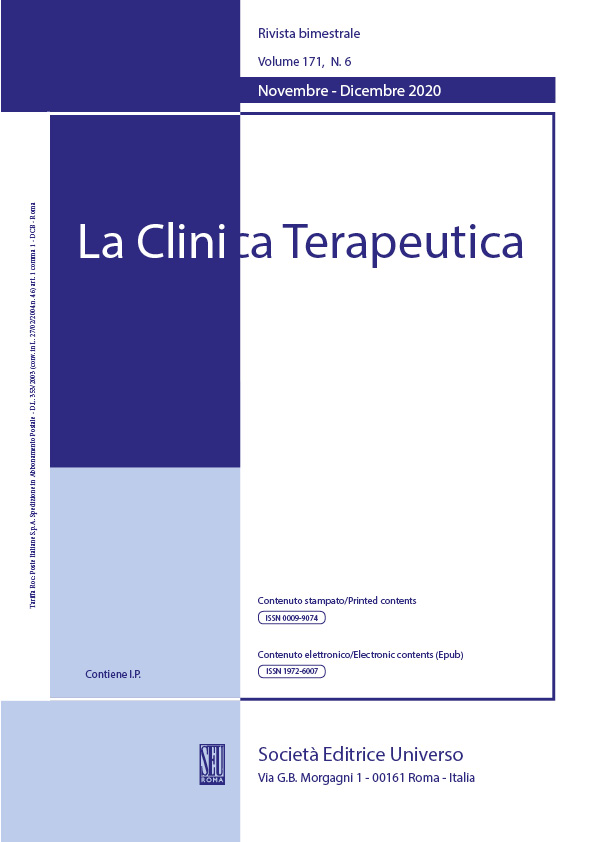Abstract
Objectives. Atrial fibrillation (AF) is a clinically relevant supra-ventricular arrhythmia which represents an independent risk factor for development of heart failure and ischemic stroke. The present study aims at the investigation of the possible clinical role of the soluble sST2 biomarker to evaluate the fibrosis in a group of patients with first diagnosed or permanent AF. The possible association with the left atrium size is also studied.
Materials and Methods. The serum concentrations of the biomarker have been measured in a group of 58 patients (mean age 83.6 ± 6.0 years) and 40 individuals, assumed healthy and without AF, constituted the control group. The analysis is carried out by means of a high-sensitivity enzyme-linked immunosorbent assay.
Results. The mean concentration of sST2 is 26.1 (22.7-30.5) ng/mL in the AF group, while in the control is 17.3 (15.7-18.9) ng/mL. Remarkable differences have been obtained for the two subsets with first diagnosed (23 (21.2-24) ng/mL) and permanent AF (30.5 (28.6-32) ng/mL). The analysis has been completed with a trans thoracic echocardiographic exam to evaluate the left atrium size and the left ventricular ejection fraction.
Conclusions. The sST2 serum concentrations are found to be higher in the permanent AF with respect to the cases where the AF is of new onset or follow a paroxysmal pattern. The results support the adoption of the marker to evaluate the degree of fibrosis related to the left atrium of fibrillating patients. A positive association has been proved between the left atrium size and the sST2 concentrations.
